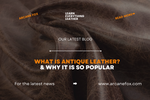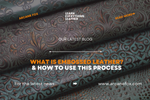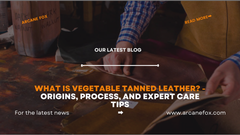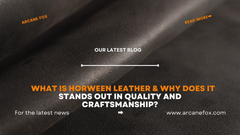What is Bicast Leather? Myths, Facts, and Benefits
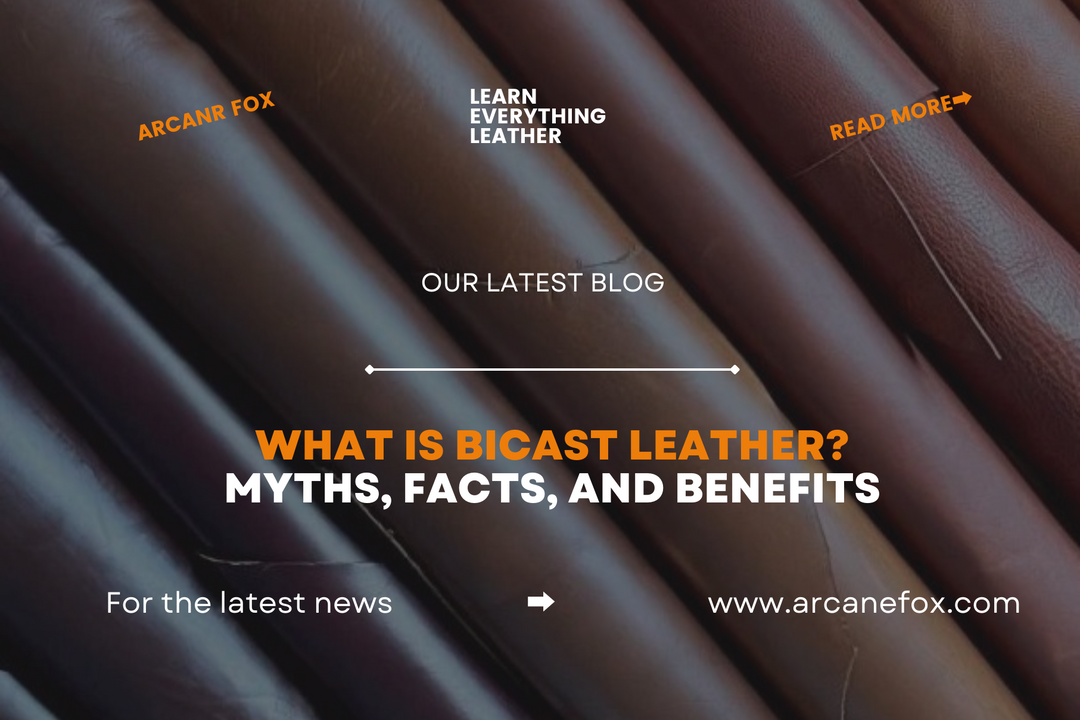
What is Bicast Leather? Myths, Facts, and Benefits
I've discovered that bicast Leather offers a great alternative to traditional leather because I'm constantly looking for affordable yet attractive solutions for various projects. Genuine leather is definitely attractive, but because of its exorbitant cost and concerns about sustainability, I've looked into alternative materials. It is important to note, nonetheless, that natural leathers are typically advised due to their high caliber and resilience.
A thin layer of split leather is bonded with a synthetic backing to create bicast leather. It offers diversity in color and finish and is simple to maintain. Bicast leather is an enticing substitute for leather lovers on a tight budget because it typically costs $1–$5 per square foot.
With so many leather substitutes on the market, it is worthwhile to examine more closely at bicast leather to learn about its special qualities, uses, and advantages. This essay will look at its traits, background, and manufacturing method while providing helpful tips for working with this adaptable and inexpensive material.
1. Bicast leather: what is it?

Bicast leather is created by covering a thin layer of split leather with either polyurethane or vinyl, a plastic or synthetic material. After that, the plastic covering is embossed (a pattern is applied to it) to give it the appearance of top-grain leather.
Since it is a result of split leather, bi-cast leather isn't totally made up of leather and isn't even leather in the strictest sense. The synthetic polyurethane or vinyl covering makes it far more inexpensive than genuine or natural leather and makes cleaning it simpler. Unlike genuine leather, which is more porous and can absorb liquids and stains, this layer is stain and spill-resistant and is readily wipeable.
2. History of Bicast Leather
The origins of Bicast Leather can be traced back to China's exploration of less expensive artificial leather substitutes in the late 1950s. Bicast Leather became a potential material for the industry as a result. Thanks to businesses like DuPont, which unveiled a 1964 U.S.-designed version of the material, it attained substantial notoriety in the 1960s.
Bicast Leather initially found application in the apparel industry as a cheap way to produce shining shoes. But its adaptability and affordability soon attracted the interest of other sectors, including furniture production. Bicast Leather gained popularity over time for a variety of items, such as couches, chairs, handbags, and accessories.
However, discussions about sustainability and quality in recent years have led buyers and producers to weigh their benefits against those of genuine leather. While bicast Leather is still a viable option for projects with a tight budget. The market is always innovating and looking at greener options to meet the wide range of demands of today's consumers.
3. Clearing Up Myths & Misconceptions
Myth/Misconception: It is not "real" leather, but bi-cast leather. This is untrue; bi-cast leather consists of split leather on the bottom and a vinyl or polyurethane coating on top. Therefore, it is possible to refer to it as a hybrid kind of leather.
Bicast leather is not vegan or environmentally friendly, despite what some individuals might think. Since bi-cast leather is made of animal hides, using chemicals like polyurethane or vinyl to cover it may have negative environmental effects.
Misconception: Bicast leather is more durable than other types of leather. It might be more stain and scratch-resistant than some types of leather. But overall it is less robust and doesn't last as long as genuine leather.
In general, bi-cast leather is less expensive than real leather. Full-grain or top-grain leather is more expensive than bi-cast leather.
Misunderstanding: Compared to other types of leather, bi-cast leather requires less upkeep. This assertion is untrue. Bicast leather can still dry out, fracture, or lose its luster without adequate maintenance, just like any other form of leather.
4. How is Bicast Leather Made?

- A split leather backing and an emboss vinyl or polyurethane layer are combine to create bi-cast leather. Typically, a piece of the fibrous, lower-grade leather that is left over after the higher-grade grain layer is split off is utilize to make bi-cast leather.
- Casting paper, an embossed release paper used in the creation of bi-cast leather, is coated with a layer of plastic. Depending on the desired outcome, embossing might produce a smooth finish or a top-grain leather appearance. The plastic layer can be customize by adding pigment, foams, and adhesives as needed.
- The plastic is then covered with split leather and maybe dried before being pressured.
- The casting paper can be taken off to reveal the finished result after the bicast leather has had time to cure.
5. How is Bicast Leather Used?

Although bi-cast leather is used in many everyday products. It was originally developed for boots but was found to be unsuitable for them due to its lack of durability and poor breathability. Bi-cast leather is being utilized to make handbags, cheap leather coats, jackets, couches, and sofas.
5.1 Some Examples of Bicast Leather Products:
6. What are the Pros And Cons of Bicast Leather?
6.1 Pros of Bicast Leather
- Affordability: Is more affordable than genuine leather.
- Easy to Clean: Cleaning and maintenance can be done quickly and easily.
- Appearance: One of the primary benefits of bi-cast leather, according to furniture makers, is its appearance, which can be obtained for less money.
6.2 Cons of Bicast Leather
- less resilient than genuine leather. Furniture made of genuine leather 2. lasts 25 to 40 years.
- Within six to eight months of regular use, prone to splitting and cracking
does not become a patina or age gracefully.
- Depending on the usage and material quality, durability varies.
It might initially smell very chemical but eventually loses that smell.
7. What is the Cost of Bicast Leather?
Natural leather is more expensive than bi-cast leather, which is more affordable than synthetic leather. The price of bi-cast leather is affected by a number of variables, including demand, quality, thickness, color, and finish.
- Square foot: Depending on the type and grade of bi-cast leather, the typical cost per square foot might range from $.75 to $5.
- ½ Hide: A bi-cast leather half hide with a 25-square-foot surface area costs between $25 and $75.
- Full Hide: Bicast leather comes in whole hides that are 50 square feet in size and cost between $50 and $150.
8. Why is Bicast leather beneficial?

Humans used leather as a fabric to create garments and accessories long before the fashion industry as we know it today even existed. It has been utilize almost everywhere throughout history, and each society did so for a specific cause. Given its comfort and durability, leather makes a great material to protect the human body or other items.
8.1 How Does Last Long Bicast Leather?
Leather lasts a very long time, especially if it is of high quality. Generally speaking, leather manufacturers seek to get the most out of their leather by giving it a treatment that boosts its toughness and longevity. Although more expensive, higher-quality leather products will almost always last longer and still look wonderful.
8.2 Is Bicast Leather Durable?
While discussing durability, we also need to discuss the classic cloth leather. Leather accessories are constantly in style and represent stability and a reverence for strong foundations. It is impossible to claim that making leather very durable is pointless because it has established itself as a material that never goes out of style.
8.3 Style
Leather is a particularly well-liked material. Whether it is natural or colored, leather always adds a certain sense of class to any design. Leather gives things a strong appearance; leather handbags are superior to their plastic counterparts, and leather trousers appear more durable than their cotton counterparts. If you're going to fight in a pub, you should dress in leather. Despite the jokes, leather still has a beautiful appearance and stands for a love of power, authenticity, and elegance. It is quite astonishing how the same may be expressed through your wardrobe and accessories. Since real leather won't flake or rip, your leather goods will continue to be functional. It's crucial to remember that real leather may have a few little flaws or marks on garments or accessories.
8.4 Facilitate
We do not advise using any synthetic leather because it is a natural material (with a few notable exceptions, of course). Because we have to deal with natural materials when it comes to our clothing, it is always vital to have products manufactured from those materials. Even if you never feel it or can ever do it, wearing natural clothing will make you feel better physically and emotionally than wearing synthetic clothing. Which may make you feel worse because they are foreign materials to your body and are not intend for human usage. Create direct connections.
8.5 Quality
Leather is resilient and typically keeps its quality over time. When dried, the leather is abrasion-resistant, somewhat waterproof, and fire resistant if treated. Leather is resistant to mite and fungus infestation, unlike other materials. Even if you don't give the leather any additional care, it will still look and feel fantastic because it is lint- and dust-free. In order to protect your possessions when traveling, we advise purchasing leather travel bags. The last thing you need is for your weekend bag to shatter as you're sprinting for a bus.
9. Tips for Leather Crafting With Bicast Leather
- To prevent stretches, tears, and wear when dealing with bi-cast leather, use sharp tools.
- Implement a low-temperature iron. You must use caution when ironing bi-cast leather because it is heat-sensitive.
- Do not stitch; instead, use glue or rivets. Bicast leather should not be stitch since the needle holes could weaken and rip the leather.
- safeguard the surface. Bicast leather is scratch-prone.
10. Our Research on Bicast Leather
The leather industry frequently uses bi-cast leather because of its adaptability, toughness, and reasonable pricing. Bicast leather, which I learned about from my study, is split leather that has a layer of polyurethane or vinyl on top to give it a shiny, smooth appearance.
11. Bicast Leather Care and Maintenance

11.1 How to Clean Bicast Leather?
Bicast leather is simple to clean with a moist towel and a light soap or detergent. Avoid using harsh substances that could harm the polyurethane coating, such as solvents, alcohol, or abrasives. Use a dry cloth to wipe the surface gently in circular strokes, then blot up any extra moisture.
Avoid scrubbing or rubbing too vigorously as this may cause the coating to peel or crack. To carefully release the dirt for difficult stains, use a sponge or a soft-bristled brush. You can also use a leather cleaner made specifically for bicast leather while adhering to the manufacturer's instructions.
11.2 How to Condition Bicast Leather?
Bicast leather does not require conditioning as frequently as real leather, but it still benefits from moisturizing on occasion to keep it from cracking and drying out. You can use a bicast leather conditioner by sparingly dabbing it on with a soft cloth and gently polishing it until it is absorbe.
Applying too much conditioner risks making the surface oily or sticky. To assist repel water and grime and shield the surface from fading or discolouration, you can also use a leather protective spray.
11.3 How to Store Bicast Leather?
Bicast leather should be kept away from direct sunlight, heat sources, and moisture in a cool, dry area with good ventilation. Bicast leather should not be fold or crumpled as this may result in cracks or creases that are permanent in the covering. Instead, set it flat on a shelf or drawer or hang it on a padded hanger.
Use breathable fabric, such as cotton or linen, rather than plastic or vinyl, which can trap moisture and lead to mold or mildew, if you need to cover bicast leather. To keep bugs and odors away, you can also use cedar balls or sachets.
12. Conclusion
Bi-cast leather offers the ideal combination of strength and affordability, making it a suitable alternative to real leather for many projects. Available in an array of colors and finishes. Its maintenance requirements are straightforward and it requires little upkeep compared to its alternatives. Furthermore, its effect on the environment should also be taken into consideration before choosing this material for any given task - adding sleek modern aesthetics while lasting years with proper care and maintenance.
Learn more about leather here Leather 101 - The Ultimate Guide to Different Types of Leather
Related Topics
What is Aniline Leather? Types of Aniline, Characteristics, And More
What is Semi-Aniline Leather? History, Characteristics, And More
What is Burnished Leather? & Why Should It’s Be Your Top Choice
What is Antique Leather? & Why it is So Popular
What is Embossed Leather? & How to Use This Process
What is Embroidery Leather? & What to Look for In Leather Embroidery?
What is Faux Leather? It’s Quality & Durability Against Other Leather!
What is Nappa Leather? Quality, Characteristics, and Maintenance
What is Nubuck Leather? & How is it Different From Suede Leather
What is Oil or Pull-Up Leather? It’s Durability, Characteristics, and Maintenance
What is Patent Leather? & How to Maintain It’s Quality and Shining
What is Pigmented Leather? How is it Made, It's uses and characteristics

